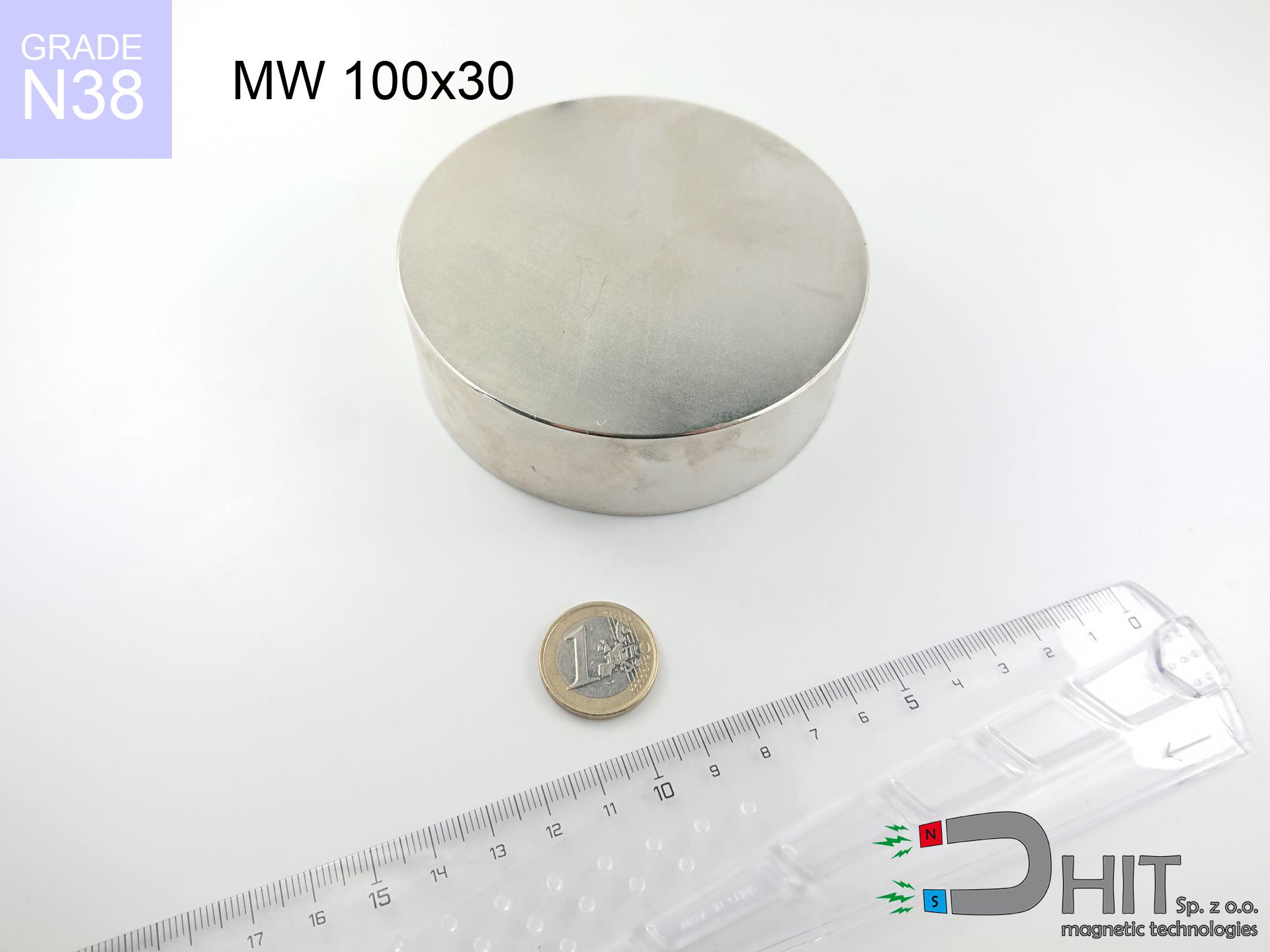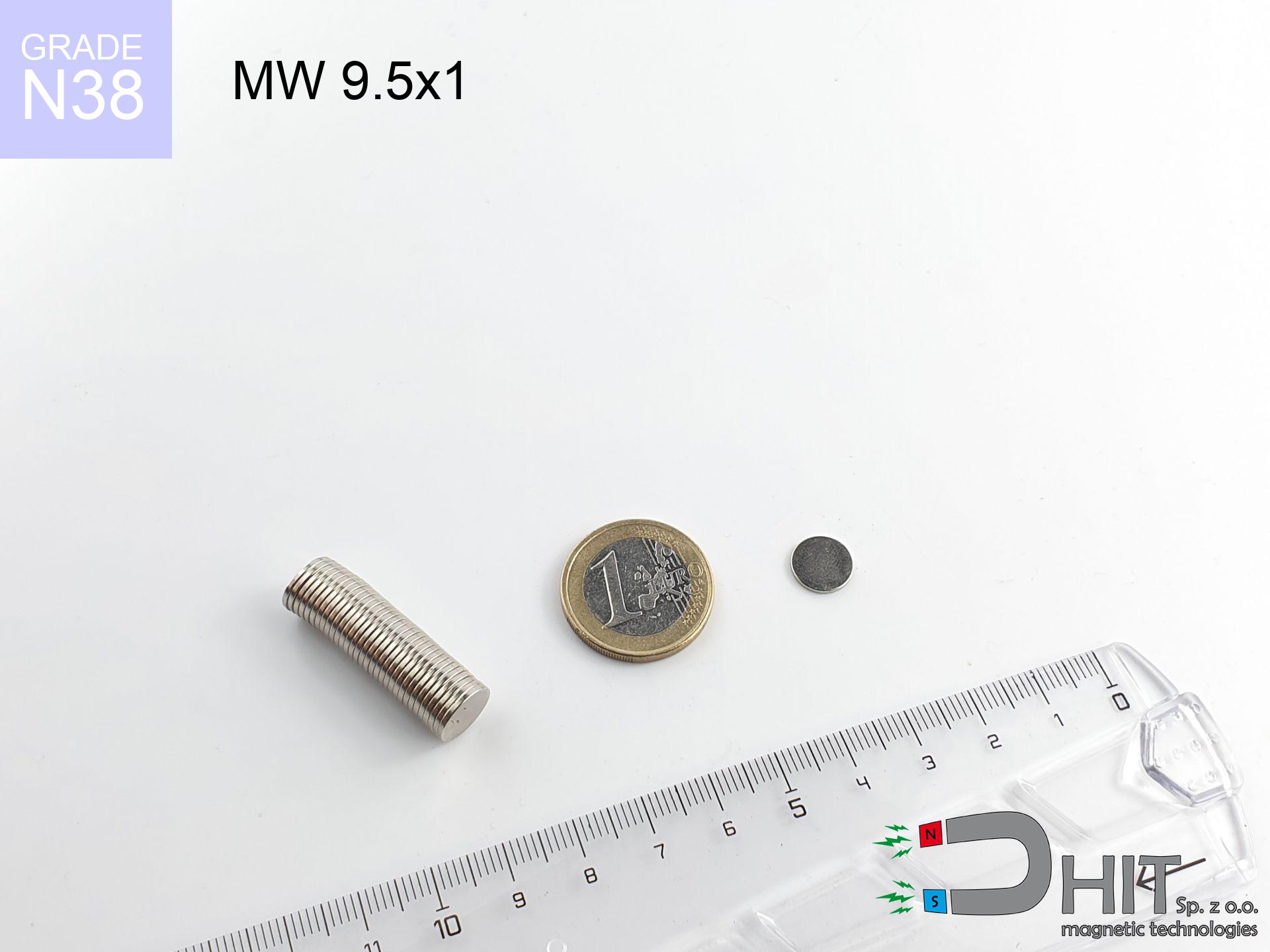UMGW 48x24x11.5 [M8] GW / N38 - magnetic holder internal thread
magnetic holder internal thread
Catalog no 180418
GTIN: 5906301813774
Diameter Ø [±0,1 mm]
48 mm
Height [±0,1 mm]
24 mm
Height [±0,1 mm]
11.5 mm
Weight
140 g
Load capacity
80 kg / 784.53 N
59.96 ZŁ with VAT / pcs + price for transport
48.75 ZŁ net + 23% VAT / pcs
bulk discounts:
Need more?Can't decide what to choose?
Give us a call
+48 22 499 98 98
alternatively contact us through
form
the contact page.
Specifications along with structure of magnetic components can be calculated using our
force calculator.
Order by 14:00 and we’ll ship today!
Magnetic properties of material N38
Physical properties of sintered neodymium magnets Nd2Fe14B at 20°C
Shopping tips
Pros and cons of NdFeB magnets.
Apart from their notable holding force, neodymium magnets have these key benefits:
- They do not lose magnetism, even over around ten years – the decrease in power is only ~1% (according to tests),
- They are noted for resistance to demagnetization induced by external disturbances,
- The use of an aesthetic layer of noble metals (nickel, gold, silver) causes the element to have aesthetics,
- The surface of neodymium magnets generates a strong magnetic field – this is one of their assets,
- Made from properly selected components, these magnets show impressive resistance to high heat, enabling them to function (depending on their form) at temperatures up to 230°C and above...
- Thanks to freedom in shaping and the ability to modify to unusual requirements,
- Versatile presence in modern industrial fields – they are used in HDD drives, motor assemblies, medical devices, and multitasking production systems.
- Relatively small size with high pulling force – neodymium magnets offer impressive pulling force in tiny dimensions, which allows their use in miniature devices
Disadvantages of neodymium magnets:
- To avoid cracks upon strong impacts, we recommend using special steel housings. Such a solution protects the magnet and simultaneously increases its durability.
- Neodymium magnets lose power when exposed to high temperatures. After reaching 80°C, many of them experience permanent drop of power (a factor is the shape and dimensions of the magnet). We offer magnets specially adapted to work at temperatures up to 230°C marked [AH], which are extremely resistant to heat
- When exposed to humidity, magnets usually rust. For applications outside, it is recommended to use protective magnets, such as those in rubber or plastics, which prevent oxidation as well as corrosion.
- Limited possibility of creating threads in the magnet and complicated forms - preferred is casing - magnetic holder.
- Possible danger related to microscopic parts of magnets pose a threat, in case of ingestion, which gains importance in the context of child health protection. Furthermore, small components of these devices are able to disrupt the diagnostic process medical after entering the body.
- High unit price – neodymium magnets have a higher price than other types of magnets (e.g. ferrite), which can limit application in large quantities
Maximum magnetic pulling force – what it depends on?
The force parameter is a result of laboratory testing performed under the following configuration:
- using a base made of mild steel, acting as a ideal flux conductor
- whose transverse dimension equals approx. 10 mm
- with a surface free of scratches
- without any insulating layer between the magnet and steel
- under vertical application of breakaway force (90-degree angle)
- at room temperature
Determinants of lifting force in real conditions
Effective lifting capacity is affected by working environment parameters, such as (from most important):
- Distance (betwixt the magnet and the plate), because even a tiny clearance (e.g. 0.5 mm) can cause a reduction in force by up to 50% (this also applies to varnish, corrosion or dirt).
- Force direction – catalog parameter refers to pulling vertically. When applying parallel force, the magnet holds significantly lower power (typically approx. 20-30% of maximum force).
- Element thickness – for full efficiency, the steel must be sufficiently thick. Thin sheet restricts the attraction force (the magnet "punches through" it).
- Material type – the best choice is high-permeability steel. Cast iron may generate lower lifting capacity.
- Surface finish – ideal contact is possible only on smooth steel. Any scratches and bumps reduce the real contact area, reducing force.
- Temperature influence – hot environment reduces magnetic field. Exceeding the limit temperature can permanently demagnetize the magnet.
* Lifting capacity was measured by applying a polished steel plate of optimal thickness (min. 20 mm), under perpendicular detachment force, however under attempts to slide the magnet the load capacity is reduced by as much as fivefold. Moreover, even a small distance {between} the magnet’s surface and the plate lowers the load capacity.
Safety rules for work with neodymium magnets
GPS Danger
An intense magnetic field disrupts the functioning of magnetometers in smartphones and navigation systems. Do not bring magnets close to a device to prevent damaging the sensors.
Electronic hazard
Very strong magnetic fields can corrupt files on payment cards, HDDs, and other magnetic media. Maintain a gap of min. 10 cm.
Beware of splinters
Despite metallic appearance, the material is delicate and cannot withstand shocks. Avoid impacts, as the magnet may crumble into hazardous fragments.
Dust explosion hazard
Powder produced during grinding of magnets is combustible. Avoid drilling into magnets unless you are an expert.
Powerful field
Be careful. Neodymium magnets act from a distance and connect with massive power, often quicker than you can react.
Do not overheat magnets
Avoid heat. Neodymium magnets are susceptible to heat. If you need operation above 80°C, look for special high-temperature series (H, SH, UH).
Danger to the youngest
Absolutely store magnets away from children. Choking hazard is significant, and the effects of magnets connecting inside the body are fatal.
Finger safety
Watch your fingers. Two large magnets will snap together immediately with a force of several hundred kilograms, destroying anything in their path. Exercise extreme caution!
ICD Warning
Warning for patients: Strong magnetic fields disrupt electronics. Keep minimum 30 cm distance or request help to handle the magnets.
Nickel coating and allergies
Some people have a hypersensitivity to Ni, which is the common plating for neodymium magnets. Prolonged contact may cause dermatitis. We recommend wear safety gloves.
Danger!
More info about hazards in the article: Safety of working with magnets.

![Magnet for screw UMGW 48x24x11.5 [M8] GW / N38 Magnet for screw UMGW 48x24x11.5 [M8] GW / N38](https://cdn3.dhit.pl/graphics/banners/magnet.webp)
![UMGW 48x24x11.5 [M8] GW / N38 - magnetic holder internal thread](https://cdn3.dhit.pl/graphics/products/umgw-48x24x11.5-m8-gw-val.jpg)


![SM 32x500 [2xM8] / N42 - magnetic separator SM 32x500 [2xM8] / N42 - magnetic separator](https://cdn3.dhit.pl/graphics/products/sm-32x500-2xm8-jan.jpg)
![SM 32x375 [2xM8] / N42 - magnetic separator SM 32x375 [2xM8] / N42 - magnetic separator](https://cdn3.dhit.pl/graphics/products/sm-32x375-2xm8-nif.jpg)

